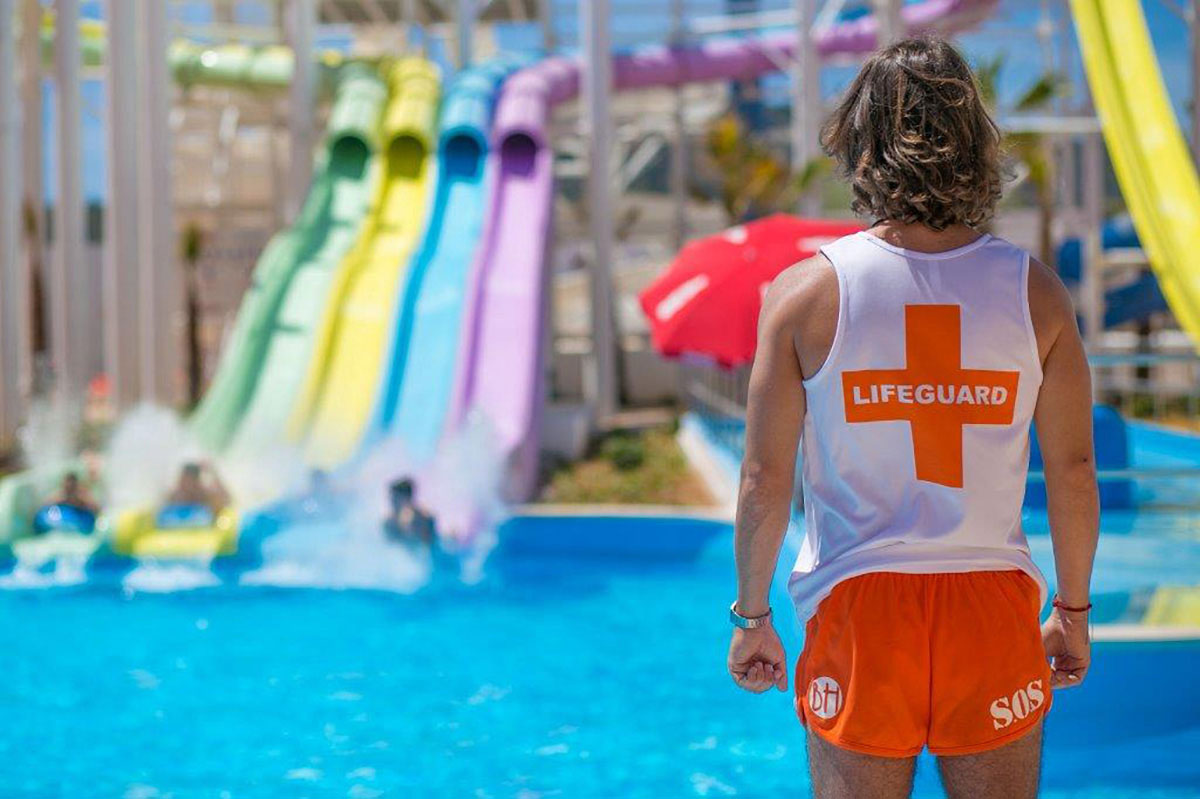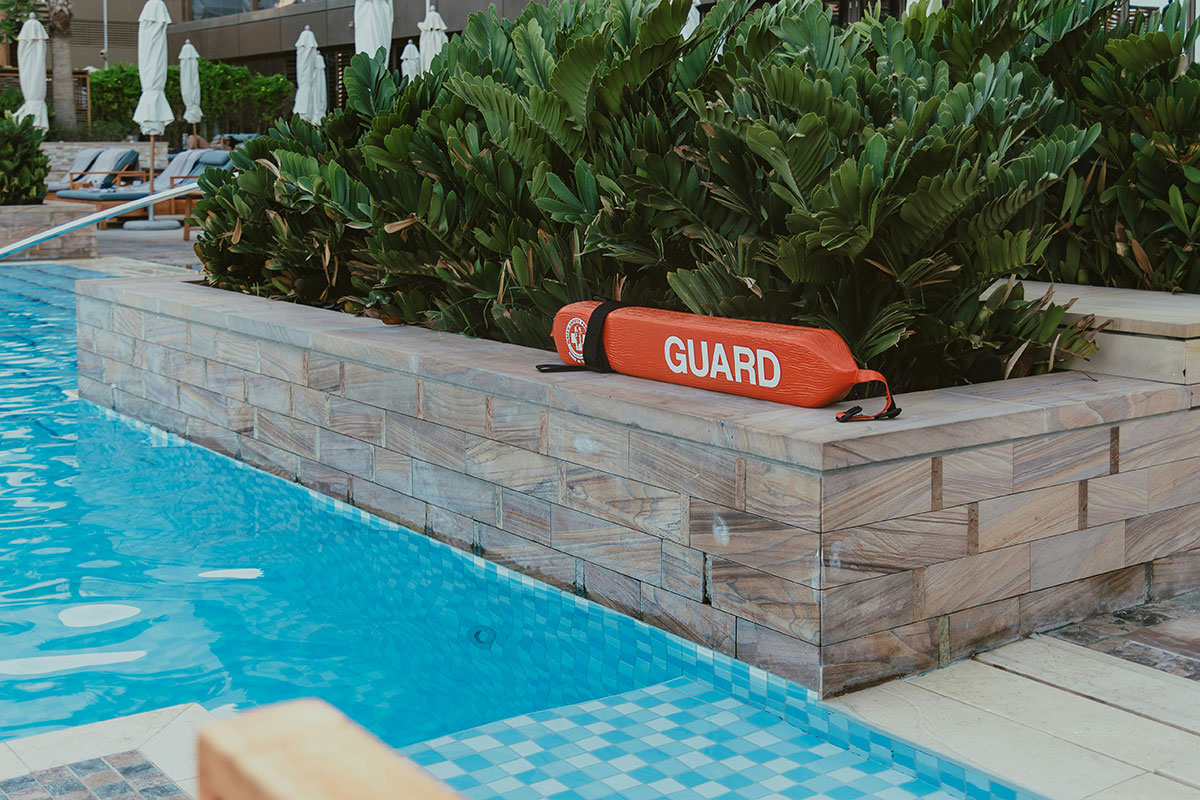Amusement Logic, as a leisure and tourism designer, must consider general design criteria to maximise the effectiveness of lifeguard supervision from their workstations in a swimming pool, whether it is in a hotel or resort, a campsite or a water park. To do this, we always comply with local regulations, if any, or international regulations in any case. These regulations usually determine the minimum number of lifeguards depending on the surface area and capacity of the pools.
General layout of the facility
Beyond commercial and public flow criteria, the general layout of a water park, hotel, resort or campsite must take into account the visibility of pool basins and water attractions. In addition to contributing to safety, it often significantly reduces the number of staff required.
Distance from lifeguard stations in swimming pools
In the pool of a water park, a hotel or resort or a campsite, the most dangerous zone is the transition zone from one depth to another. It is common for more accidents to be concentrated in the shallower areas (referred to as the “risk zone“) than in the deeper areas (or “danger zone“). As the deeper zone is usually further away from the children’s areas, it is essential to seek a balance in supervision, rather than exclusively monitoring the deep zone. The areas covered by each post should overlap appropriately to ensure continuous coverage.
Lifeguards: availability and work dynamics
It is crucial that lifeguards maintain visual awareness, not only of the pool, but also of other positions to facilitate coordination and rotations. In this aspect, the park’s operations plan plays an essential role, by establishing appropriate shifts and rotations for each position.
Proximity of lifeguards and access to evacuation and first aid routes
In addition to considering distance in the design of pools in water parks, campsites or hotels and resorts, it is important to avoid obstacles (such as stairs) to access the first aid or evacuation points. Although the location of these should be primarily based on rescue criteria, the distance to the first-aid station or the existence of shade, should also be considered.
Lifeguard stations according to pool type
The distribution of lifeguard stations varies according to the type of pool. For example, lazy rivers require a lifeguard station at each bend, while wave pools, due to the movement of the water and the presence of waterfalls, require twice as many staff compared to a normal pool of the same surface area. Children’s attractions with towers require stations on both sides due to their visual complexity.


Flexibility in the positioning of lifeguards in swimming pools
Although there are dynamic lifeguard positions, or assigned areas around which staff move, in most cases the lifeguard is assigned a fixed position around the pool. However, they should be able to relocate according to particular needs and circumstances. In any case, the location of the posts in the water park, campsite, hotel or resort project should be discussed with experienced lifeguards. However, the possibility of repositioning them to improve the viewing angle or to avoid disturbances (noise, glare, etc.) should be considered.
Sun and glare for lifeguards
To avoid the disadvantages of glare from the sun, the use of integrated, adjustable sun visors at lifeguard stations is recommended instead of conventional sunshades, which often cannot be positioned to block the sun without obstructing vision. In addition, the sun’s path should be considered, as a suitable position at one time of day may not be suitable at another. It should also be checked for glare from windows, metal railings or other elements.
Height of lifeguard posts
Elevated stands significantly increase visibility and reduce blind spots. However, when designing the pool or water attraction, it is necessary to consider slopes and visual barriers. In any case, the stand should be as close as possible to the pool and take priority over the arrangement of loungers for the public.
Storage at lifeguard positions
In addition to the basic equipment (pole, float), the stand should have storage space for drinks (to maintain hydration), communication equipment, megaphone, binoculars, among others. Otherwise, inadequate storage of these items hinders the movement of the rescuer.
Lifeguard seating
The seat should be comfortable and preferably adjustable to suit the different builds of the lifeguards. It should also allow for a change of position to keep alert. Some first aiders prefer to alternate between sitting and standing.
Testing and experience of the lifeguard’s duties
Finally, it is essential to test the time it takes to provide assistance at each point in the pool. The staff must familiarise themselves with the pool, its surroundings, the singular points or those requiring special attention, as well as the quickest routes to reach each lifeguard point.
By Miquel Solís, senior architect in Amusement Logic‘s Architecture Department.








